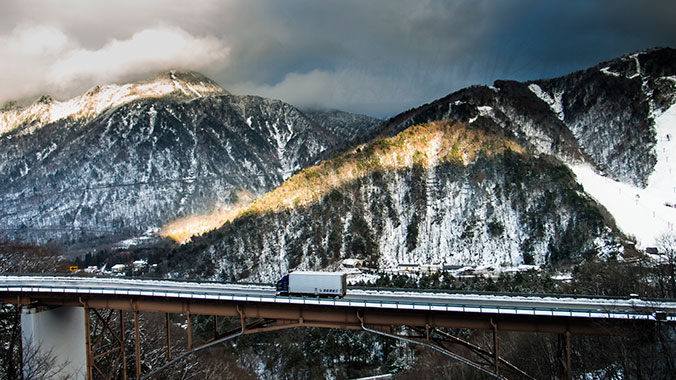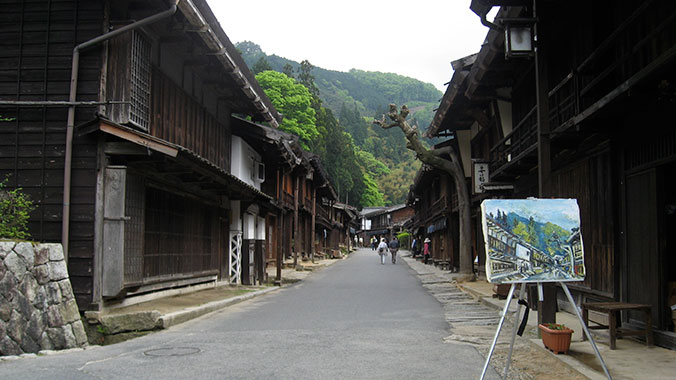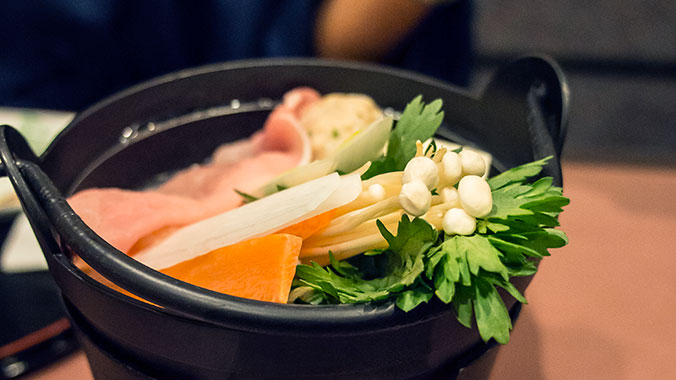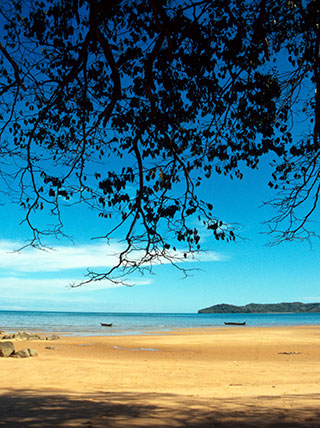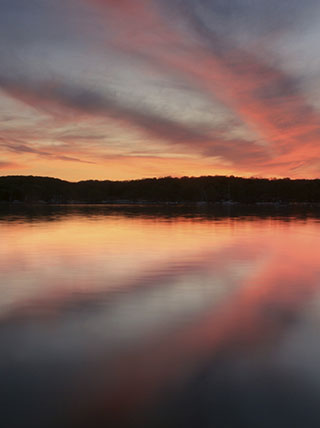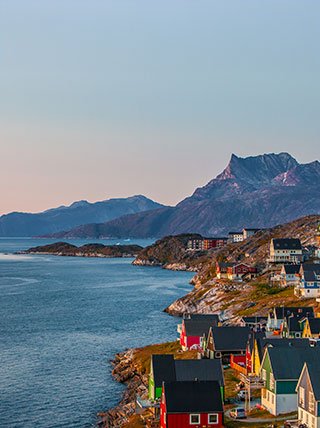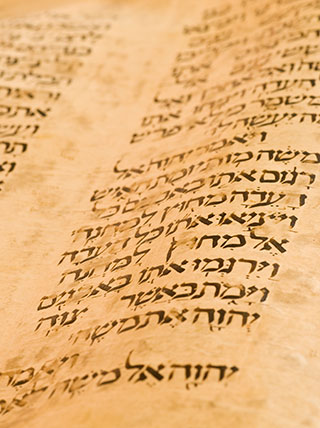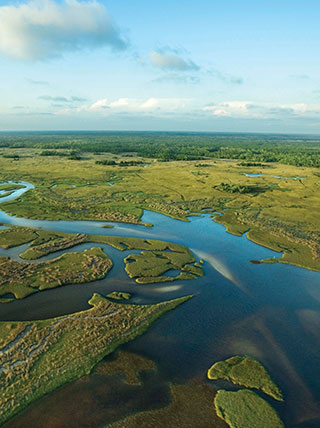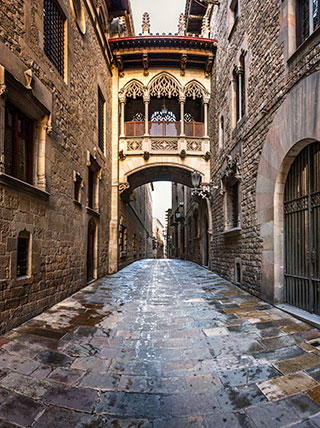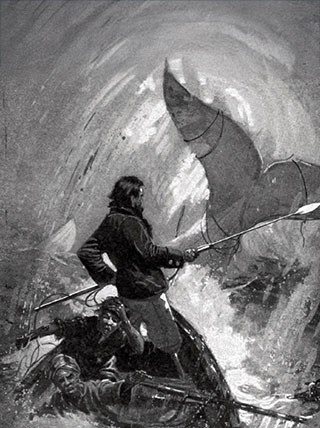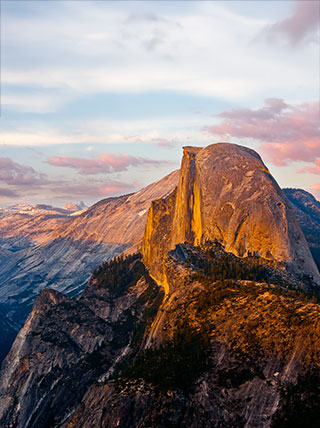Japan
Japan: An Exploration of History, Culture and Society
Program No. 19724RJ
Fulfill the dream of a lifetime as you immerse yourself in the traditions, history and stunning landscapes of one of the world’s most ancient and beautiful cultures: Japan.
Enroll with Confidence
We want your Road Scholar learning adventure to be something to look forward to—not worry about. Learn more
Protecting the Environment
We offset a portion of the emissions created by your travel. Learn more
Itinerary
While we make every effort to ensure the accuracy of our published materials, programs are typically advertised more than a year prior to their start date.
Read More.
While we make every effort to ensure the accuracy of our published materials, programs are typically advertised more than a year prior to their start date. As a result, some program activities, schedules, accommodations, personnel, and other logistics occasionally change due to local conditions or circumstances. Should a major change occur, we will make every effort to alert you. For less significant changes, we will update you during orientation. Thank you for your understanding.
Duration
17 days
16 nights
What's Included
32 meals (
15B, 8L, 9D
)
3 expert-led lectures
22 expert-led field trips
3 hands-on experiences
An experienced Group Leader
15 nights of accommodations
Taxes and customary gratuity
Road Scholar Assurance Plan
Day
1
In Transit to Program
Location:
In Flight
Day
2
Arrive Tokyo, Check-in, Welcome Dinner
Location:
Tokyo
Meals:
D
Stay:
Hotel Kazusaya
Activity Note
Hotel check-in available from 3:00 p.m., meet group in lobby at 6:45 p.m.
Afternoon:
The Group Leader will greet everyone and lead introductions. We will review safety guidelines, emergency procedures, and answer questions. This program will be accompanied by a Group Leader, who will primarily handle logistics, and an Instructor who will lead most lectures and field trips, unless otherwise specified. This program offers participants more opportunities to explore and dine on their own – unlike traditional Road Scholar programs, Japan: An Exploration of History, Culture, and Society has more free time and fewer group meals, which will allow you to explore Japan on your own. Meals will include water and tea; other beverages will be available for purchase. Periods in the daily schedule designated as “Free time” and “At leisure” offer opportunities to do what you like and make your experience even more meaningful and memorable according to your personal preferences. Please refer to the attachments at the end of this document for suggestions. The Group Leader will also be happy to offer suggestions. Program activities, schedules, personnel, and indicated distances or times may change due to local circumstances/conditions. In the event of changes, we will alert you as quickly as possible. Thank you for your understanding.
Dinner:
At the hotel, we’ll have a tasty plated meal for our Welcome Dinner, plus coffee, tea, water; other beverages available for purchase.
Evening:
At leisure. Continue getting to know your fellow Road Scholars, settle in, and get a good night’s rest for the day ahead.
Day
3
Historical Edo, The Samurai & Economic Heart Of Feudal Japan
Location:
Tokyo
Meals:
B,L,D
Stay:
Hotel Kazusaya
Activity Note
Introductory lecture to Japan and its history, followed by a walk around the Nihonbashi area. In the afternoon, explore the Imperial Palace East Gardens, formerly Edo Castle, seat of the Tokugawa Shogunate. Total walking up to six miles.
Breakfast:
At the hotel, the breakfast buffet will include a variety of items, plus juice, coffee, tea, water.
Morning:
After the program Orientation, which will review the up-to-date program schedule, discuss roles and responsibilities, and logistics, we'll start out the day with a lecture from our Instructor focusing on the history of Tokyo, but including general Japanese history, allowing us to gain some familiarity with the development of the nation and its people. Following our lecture we set out on a walking exploration of the Nihonbashi district of Tokyo with our Instructor. Edo, as Tokyo used to be known in the feudal period, was the de facto political and military center of Japan. Nihonbashi was Edo’s heart with the five main highways of Japan terminating here.
Lunch:
At a local restaurant, we’ll have plated meals with tea and water; other beverages available for purchase.
Afternoon:
We’ll visit the nearby Imperial Palace Gardens on the site of the former shogun’s castle. We’ll then return to the hotel for some time to freshen up before walking to a nearby restaurant for dinner.
Dinner:
At a local restaurant, we’ll enjoy a tasty family-style meal with tea and water; other beverages available for purchase.
Evening:
After returning to the hotel, the remainder of the evening will be at leisure.
Day
4
Asakusa & Senso-ji Temple, Japanese food, Free Time
Location:
Tokyo
Meals:
B
Stay:
Hotel Kazusaya
Activity Note
Walking up to approximately 4 miles throughout the morning; gentle pace. Afternoon dependant on chosen activity. Use of transportation including assorted rail and subway transfers; about 1 hour total; some stairs, flat city streets, elevators/escalators sometimes available. Shoes may need to be removed to visit some of the sites today.
Breakfast:
Hotel buffet.
Morning:
After transferring via subway to Asakusa, we will visit the famous Senso-ji temple led by our Instructor. Asakusa is the centre of Tokyo’s Shitamachi, the low city, and was an entertainment district for the lower classes. Senso-ji is a very popular Buddhist temple that was built in the 7th century with a market and entertainment street leading up to it.
Lunch:
On your own to sample the local fare.
Afternoon:
The afternoon will be free for independent exploration. It is a straightforward journey on the Yamanote line back to the vicinity of the hotel.
Dinner:
This meal has been excluded from the program cost and is on your own to enjoy what you like. Please refer to the list of suggested restaurants in the attachments as well as in the handouts provided by the Group Leader.
Evening:
At leisure. Be sure to prepare for check-out and transfer in the morning. Main luggage will be gathered in the morning and sent to Kiso-Fukushima via overnight courier, be sure to pack overnight belongings in a day pack for our stay on the first night in Kiso-Fukushima.
Day
5
The Nakasendo Way, Print Museum, Post Towns of Kiso Valley
Location:
Kiso-Fukushima
Meals:
B,D
Stay:
Kisojino-yado Iwaya
Activity Note
Traveling approx. 300 miles; about 5 hours total throughout the day by rail and motorcoach, with stops. Walking approx. 2 miles around Tsumago; elective additional trail hike of about 3 miles; approx. 1.5 hours; some uneven terrain, stone trail. Sleeping in lodgings on traditional futons on tatami mats on the floor. Main luggage will be sent by overnight courier from Tokyo to arrive in Kiso-Fukushima tomorrow. Shoes will need to be removed to enter some of the attractions today.
Breakfast:
Hotel buffet.
Morning:
Once checked out of the hotel, we’ll set off early by bullet train to the picturesque Kiso Valley and the Nakasendo Way. Upon arrival in town, we’ll learn about the woodblock printing process at the Hiroshige Print Museum, then try our hands at producing some of our own. These iconic prints give great insight into the daily life of Edo-period Japan, particularly along the Nakasendo Way, an old highway of Japan. We’ll then head to a Japanese supermarket for lunch.
Lunch:
On your own to explore local fare while experiencing the novelty of a Japanese supermarket.
Afternoon:
We’ll then board a motorcoach to continue our transfer to Tsumago, a picturesque old post town and probably the most famous in Japan. As we approach, you may choose to embark on an elective walk along the old Nakasendo. You may also choose to drive the whole way to Tsumago and spend more time exploring before we all regroup to discover the workings of a traditional high-class inn, and visit the local history museum. Next, we’ll travel onward to Kiso-Fukushima and our lodgings where we will be able to immerse ourselves fully in Japanese culture at an excellent modern Japanese inn with onsen, also known as hot spring baths.
Dinner:
At the ryokan, a traditional Japanese inn, we’ll enjoy a customary plated Japanese dinner with tea and water; other beverages available for purchase.
Evening:
At leisure.
Day
6
Make Soba Noodles, Barrier Stations
Location:
Kiso-Fukushima
Meals:
B,L,D
Stay:
Kisojino-yado Iwaya
Activity Note
Transferring via local bus approx. 6 miles one way; about 1 hour roundtrip. Walking approximately 2 miles throughout Kiso-Fukushima; about 2 hours; fairly flat, on pavement. Sleeping on floor in traditional Japanese fashion. Shoes will need to be removed to enter some of the attractions today.
Breakfast:
In the ryokan, we’ll have a traditional Japanese-style plated breakfast with tea and water.
Morning:
Setting out from the ryokan, we’ll transfer via local bus to our cookery workshop where we’ll roll up our sleeves and learn from a team of local folks how buckwheat soba noodles, a local specialty, are made by hand.
Lunch:
At the cookery workshop, we’ll enjoy the noodles we made with tea and water.
Afternoon:
We’ll then return to Kiso-Fukushima the way we came, enjoying a stroll as we learn about the town's history as a barrier station checkpoint that monitored traffic and enforced the strict regulations imposed by the Tokugawa Shogunate. Afterwards, we'll have a bit of free time before returning to our lodgings.
Dinner:
Ryokan traditional plated meal.
Evening:
At leisure. Be sure to prepare for check-out and transfer in the morning.
Day
7
Kyoto Textiles - from Silkworm to Kimono
Location:
Kyoto
Meals:
B,L,D
Stay:
Daiwa Roynet Hotel Kyoto Shijo-Karasuma
Activity Note
Train ride to Kyoto is about 170 miles; approx. 3 hours. Walking approx. 1.5 miles during afternoon group activity; flat terrain, pavement, roads. Shoes may need to be removed to enter some of the attractions today.
Breakfast:
Ryokan traditional plated meal.
Morning:
We depart for our three hour train transfer to Kyoto.
Lunch:
At a local restaurant, we’ll have plated meals with tea and water; other beverages available for purchase.
Afternoon:
After lunch we will visit the Nishijin Textile Center. Silk weaving and sericulture arrived in Japan during the 5th or 6th century, and quickly became popular with the Imperial Court. After the strife of the Onin War (1467~1477), craftsmen who had left Kyoto for safer regions return, and settled in the area where the army of the West (“Nishi-jin”) had been based. As a result the textiles they produced came to be known as “nishijin-ori.” The Center features numerous displays, and we will learn about the entire process of producing and weaving silk, as well be able to see seasonal exhibits. We will then take a seat at our own mini-handlooms and try our hand at this ancient craft.
Dinner:
Plated dinner at a local restaurant.
Evening:
At leisure.
Day
8
Cultural Icons of Kyoto, Nijo Castle
Location:
Kyoto
Meals:
B
Stay:
Daiwa Roynet Hotel Kyoto Shijo-Karasuma
Activity Note
Walking approx. 3 miles throughout the morning’s group activities; more depending on personal preference during free time; some unavoidable stairs. Private transfers via coach.
Breakfast:
At the hotel, the breakfast buffet will feature both Western and Japanese dishes, plus juice, milk, coffee, tea, water.
Morning:
Setting out from the hotel, we’ll begin a comprehensive multi-stop field trip led by our Instructor. First, we’ll arrive at Ginkaku-ji Temple (Silver Pavilion), built by the 8th Ashikaga Shogun Yoshimasa. Like his grandfather, Yoshimitsu, Yoshimasa was a great patron of the arts but a poor governor of the nation. While Kyoto was engulfed in the internecine and destructive Onin Wars, the Higashiyama culture began and flourished at Ginkaku-ji. Based largely on the ideals and aesthetics of Zen Buddhism and the concept of wabi-sabi, which can be translated as beauty in simplicity, Higashiyama culture centered on the development of the Japanese tea ceremony, ikebana flower arranging, Noh drama, and sumi-e ink painting. Our next stop will be the Kyoto Museum of Crafts and Design and begin with an introduction to the city’s splendid artisan crafts.
Lunch:
On your own to sample the local fare.
Afternoon:
To round off the main theme of today, we’ll go on an expert-led field trip to Nijo-jo Castle, the only residence of the shogun still in existence, for a chance to learn about the daily life at the shogun's court.
Dinner:
On your own to enjoy what you like among Kyoto’s abundant, small restaurants. Please refer to the list of suggested restaurants in the attachments as well as in the handouts provided by the Group Leader.
Evening:
At leisure, after transferring to and checking in at the hotel.
Day
9
Japanese Tea Ceremony, Daitoku-ji Temple, Free Time
Location:
Kyoto
Meals:
B,L
Stay:
Daiwa Roynet Hotel Kyoto Shijo-Karasuma
Activity Note
Walking approx. 5 miles throughout the day; more depending on personal preference; some unavoidable stairs. Taxi transfers. Sitting on either tatami mats or small chairs on the floor while participating in the tea ceremony. Note that space is limited at the tea room, and that large groups will be split into two, reversing the daily itinerary. Sitting on the floor at lunch. Shoes will need to be removed to enter some of the attractions today.
Breakfast:
At the hotel.
Morning:
As we explore Kyoto's history and culture on foot led by our Instructor, we’ll first make a visit to the Daitoku-ji temple complex, associated with the ultimate master of the tea ceremony, Sen-no-rikyu. Then, a short walk away, we’ll experience a tea ceremony in the informative and enthralling company of a tea master. We’ll delve into the ceremony, a delightful and deeply meaningful practice far from the rigid image it often has, and also make tea for each other.
Lunch:
At a Shojin Ryori, a temple vegetarian restaurant, located by the 56-acre Daitoku-ji temple complex, we’ll have plated meals, plus tea and water; other beverages available for purchase.
Afternoon:
Free time. Take this opportunity for personal independent exploration to see and do what interests you most. Please refer to the list of Free Time Opportunities in the attachments. The Group Leader will be happy to offer other suggestions as well.
Dinner:
On your own to enjoy what you like among Kyoto’s abundant, small restaurants. Please refer to the list of suggested restaurants in the attachments as well as in the handouts provided by the Group Leader.
Evening:
At leisure. Be sure to prepare for check-out and transfer in the morning. Main luggage will be gathered in the morning and sent to Hiroshima via overnight courier, be sure to pack overnight belongings in a day pack for the first night of our stay in Hiroshima.
Day
10
Tale of Heike, Miyajima Island, Shinto Itsukushima Shrine
Location:
Hiroshima
Meals:
B,D
Stay:
Hotel Granvia Hiroshima
Activity Note
Bullet train ride of approx. 220 miles to Hiroshima; about 2 hours. Walking approx. 5 miles throughout the day in Hiroshima and Miyajima; mostly flat, pavement, roads. Some short transfers by tram and ferry. Main luggage will be sent by overnight courier from Kyoto to arrive in Hiroshima tomorrow.
Breakfast:
At the hotel.
Morning:
After checking out of the hotel, we’ll head to the train station for our morning transfer by Shinkansen bullet train to Hiroshima, a vibrant city that belies its recent and infamous past. Next, we’ll transfer to Miyajima-guchi then the ferry to Miyajima Island. The island is justly famous for the Shinto Itsukushima Shrine, built out over the sea, which we will visit. The Shrine is over 1,400 years old but its present form was established in 1168 under the patronage of Taira-no-Kiyomori, who established the first samurai government of Japan. The Taira Clan’s fierce and bloody feud with the Minamoto Clan is related in the epic, Tale of Heike. Finally victorious, the Minamoto established the Shogunate at Kamakura in 1192.
Lunch:
On your own to explore the local cuisine of Miyajima.
Afternoon:
Free time. Miyajima, where vehicles are few, is a pleasant place to stroll around before returning to Hiroshima for check-in at the hotel.
Dinner:
Buffet meal with tea and water at the hotel; other beverages available for purchase.
Evening:
At leisure.
Day
11
Hiroshima – A City Reborn, Peace Memorial Park
Location:
Hiroshima
Meals:
B,L
Stay:
Hotel Granvia Hiroshima
Activity Note
Walking approx. 5 miles total around Hiroshima; mostly flat pavement. Some transfers by tram and taxis.
Breakfast:
At the hotel.
Morning:
Our first destination of the day will bring us to to the Peace Memorial Museum where we will hear from someone affected by the atomic bomb that was dropped on the city in 1945. Following this, we will have time to visit the museum. The museum itself is a thoughtful and non-sentimental exhibition of the effects of the bomb.
Lunch:
At a local restaurant, we’ll have plated meals with tea and water; other beverages available for purchase.
Afternoon:
In the afternoon we will explore the Peace Memorial Park. Within the grounds of the park is the Atom Bomb Dome, which is the ruin of the old Industry Promotion Hall. The Hall was very close to the epicenter of the explosion and its smashed walls and twisted metal frame vividly recall the blast. The park also contains the eternal flame with a serene, underground memorial hall. The whole area is a thought-provoking site but with an overwhelming feeling of the forward-looking, hopeful way the people of Hiroshima perceive their collective experience.
Dinner:
On your own to explore some of Hiroshima's many restaurants. Please refer to the list of suggested restaurants in the attachments as well as in the handouts provided by the Group Leader.
Evening:
At leisure. Be sure to prepare for check-out and transfer in the morning. Main luggage will be gathered in the morning and sent to Oita via overnight courier, be sure to pack overnight belongings in a day pack for the first night of our stay in Oita.
Day
12
Early Japanese Buddhism, Kunisaki
Location:
Oita City
Meals:
B,L,D
Stay:
Hotel Nikko Oita Oasis Tower
Activity Note
Train transfer is approx. 180 miles; about 3 hours. Getting on/off motorcoach for short transfer on the peninsula. Walking about 3 miles total throughout the day; some uneven ground and steep steps. Driving approx. 20 miles to hotel; about one hour. Main luggage will be sent by overnight courier from Hiroshima to arrive in Oita tomorrow. Shoes will need to be removed at some locations.
Breakfast:
At the hotel, we’ll enjoy a breakfast buffet featuring both Western and Japanese-style dishes, plus juice, coffee, tea, water.
Morning:
Setting out early from the hotel to the train, we’ll transfer to Kunisaki, a little-known but fabulous area of Japan. Although sparsely populated now, it was once one of the first Buddhist strongholds in Japan with many beautiful temples and thousands of stone Buddhas and deities spread throughout the whole of Kunisaki. Common in years past, monks on pilgrimage are now a rare sight but the local religion, which has morphed over the centuries into an eclectic concoction of Buddhism, Shintoism, and various folk religions, is vibrant. While here, we’ll explore the area’s unique scenery and learn about the Japanese countryside and depopulation.
Lunch:
We’ll enjoy locally-produced, farmhouse plated meals with some of Kunisaki’s residents.
Afternoon:
Kunisaki, like so many rural areas of Japan, suffers from depopulation and decline. In conversations with residents, we’ll examine the problems this raises for the local community and what is being done to reinvigorate a small part of Japan. We continue onto Beppu, the hot spring capital of Japan. With more hot springs than anywhere else in Japan, it takes the crown as the nation’s top onsen destination. After arrival, we explore the old quarter of Kannawa in Beppu. Water vapour emanates from grilles in the streets, and above us from towering vents. Locals are to be seen throughout the day to-ing and fro-ing with towels in hand to the many public baths in the neighborhood. We then transfer a further 30 minutes to our hotel in Oita city.
Dinner:
Buffet meal with tea and water at the hotel; other beverages available for purchase.
Evening:
At leisure.
Day
13
Usuki Stone Buddhas, National Special Historic Site
Location:
Oita City
Meals:
B,L
Stay:
Hotel Nikko Oita Oasis Tower
Activity Note
Motorcoach or train ride 20 miles, 40 minutes, each way, to Usuki and back. Walking about 5 miles total throughout the day; some uneven ground and steep steps. Shoes will need to be removed at some locations.
Breakfast:
Hotel buffet.
Morning:
We transfer to the former castle town of Usuki. First we visit the Usuki Magaibutsu, a collection of 61 Stone Buddhas, carved into the cliffs of the area, and designated a National Treasure in 1995.
Lunch:
At a local restaurant.
Afternoon:
After lunch, we continue our exploration of this lovely town, nestled into the coastline and filled with historic districts and traditional architecture. At the end of the day we return to our hotel in Oita city.
Dinner:
On your own to enjoy what you like in Oita. Please refer to the list of suggested restaurants in the attachments as well as in the handouts provided by the Group Leader.
Evening:
At leisure. Be sure to prepare for check-out and transfer in the morning.
Day
14
Mountains of Kyushu and the Oita countryside
Location:
Hita
Meals:
B,L,D
Stay:
Kizantei Hotel
Activity Note
Coach transfer is approx. 60 miles; about 3 hours throughout the day, travelling around Oita prefecture. Getting on/off motorcoach to visit sites. Walking about 4 miles total throughout the day; some uneven ground and steps. Accommodation is Japanese style.
Breakfast:
At the accommodation, we’ll have a traditional Japanese-style plated breakfast with tea and water.
Morning:
The itinerary on this day will be largely weather dependant. We board our awaiting coach to begin a route through the rugged scenery of Northern Kyushu, passing between mountains and verdant forests. In good weather we visit Yume-no-Ohashi, a suspension footbridge spanning a gorge into which flow two waterfalls and the Handa Kogen plateau. In bad weather an alternative itinerary will be planned.
Lunch:
At a local restaurant.
Afternoon:
We transfer to Hita, a town at the geographical heart of Kyushu that once served as the shogun’s most important stronghold on the island. Upon arrival, we’ll explore the old town and learn about its strategic importance. Checking into our hotel, we’ll relax in the local onsen hot spring baths before dinner.
Dinner:
At the accommodation, we’ll have a traditional Japanese-style plated dinner with tea and water; other beverages available for purchase.
Evening:
At leisure.
Day
15
Dazaifu and the Kyushu National Museum
Location:
Fukuoka
Meals:
B
Stay:
Oriental Hotel Fukuoka Hakata Station
Activity Note
Coach transfer is approx. 60 miles; about 4 hours throughout the day. Up to 5 miles total walking en route to and around Dazaifu, as well as in the museum.
Breakfast:
At the accommodation, we’ll have a traditional Japanese-style plated breakfast with tea and water; other beverages available for purchase.
Morning:
We board a coach for transfer to Dazaifu, the old western capital of Japan, located on the outskirts of Fukuoka, the biggest city in Kyushu. En-route we stop at a pottery village where we learn about the unique techniques used here.
Lunch:
On your own to explore the local fare.
Afternoon:
After lunch, we visit the Kyushu National Museum to view the collections of calligraphy, sculpture and arts from Japan and its Asian neighbors. Later we stop by the impressive Tenman-Gu Shrine, dating from 905AD and home to 6,000 plum trees. We then transfer to our centrally located hotel in Fukuoka.
Dinner:
On your own to enjoy what you like. Please refer to the list of suggested restaurants in the attachments as well as in the handouts provided by the Group Leader.
Evening:
At leisure.
Day
16
Fukuoka – Japan's Gateway to Asia
Location:
Fukuoka
Meals:
B,D
Stay:
Oriental Hotel Fukuoka Hakata Station
Activity Note
Up to 4 miles total walking around Fukuoka as a group in the morning. Free time in the afternoon.
Breakfast:
Hotel buffet.
Morning:
After checking out of the hotel, we’ll set out with our Group Leader to stretch our legs on a morning exploration of this lively city, known as “Japan's gateway to Asia." Weather permitting, our first stop will be a roof-top garden, with not only sweeping views of the city, but also a small “tetsudo” (railway) shrine, where people pray for safe travels. A short walk will take us to some of Fukuoka’s most historic locations, learning more about Fukuoka’s importance as a point of trade and diplomacy between Japan, China, and Korea. Finally, a short trip on the subway will bring us to a small local museum to learn more about the area’s rich history and links with the Asian mainland.
Lunch:
On your own to sample the regional cuisine.
Afternoon:
Free time to explore Fukuoka, do some shopping, pack and plan for onward journeys the following day.
Dinner:
At a local restaurant near the hotel, we’ll celebrate our journey and review the highlights of the program over our family-style farewell dinner. Tea and water included; other beverages available for purchase. Share some of your favorite experiences from the program with new Road Scholar friends.
Evening:
At leisure. Be sure to prepare for check-out and departures in the morning.
Day
17
Program Concludes
Location:
In Flight
Meals:
B
Activity Note
Hotel check-out by 11:00 a.m. See your program’s travel details regarding transfers.
Breakfast:
Hotel buffet. This concludes our program.
Morning:
If you are returning home, safe travels. If you are staying on independently, have a wonderful time. If you are transferring to another Road Scholar program, detailed instructions are included in your Information Packet for that program. We hope you enjoy Road Scholar learning adventures and look forward to having you on another rewarding program in the future. Don’t forget to join our Facebook page and follow us on Instagram. Best wishes for all your journeys!
Please select a day to update the map
Map details are not available for this location.
Please Note:
This program has itinerary variations on certain dates.
Mar 03, 2026 - Mar 19, 2026 (Tokyo to Fukuoka)
Sep 23, 2025 - Oct 09, 2025 (Tokyo to Fukuoka)
Oct 14, 2025 - Oct 30, 2025 (Tokyo to Fukuoka)
Oct 21, 2025 - Nov 06, 2025 (Tokyo to Fukuoka)
Nov 11, 2025 - Nov 27, 2025 (Tokyo to Fukuoka)
Nov 25, 2025 - Dec 11, 2025 (Tokyo to Fukuoka)
Mar 03, 2026 - Mar 19, 2026 (Tokyo to Fukuoka)
Mar 17, 2026 - Apr 02, 2026 (Tokyo to Fukuoka)
Mar 31, 2026 - Apr 16, 2026 (Tokyo to Fukuoka)
May 05, 2026 - May 21, 2026 (Tokyo to Fukuoka)
May 12, 2026 - May 28, 2026 (Tokyo to Fukuoka)
May 26, 2026 - Jun 11, 2026 (Tokyo to Fukuoka)
Sep 29, 2026 - Oct 15, 2026 (Tokyo to Fukuoka)
Oct 13, 2026 - Oct 29, 2026 (Tokyo to Fukuoka)
Oct 27, 2026 - Nov 12, 2026 (Tokyo to Fukuoka)
Nov 10, 2026 - Nov 26, 2026 (Tokyo to Fukuoka)
Nov 24, 2026 - Dec 10, 2026 (Tokyo to Fukuoka)
Dec 01, 2026 - Dec 17, 2026 (Tokyo to Fukuoka)


